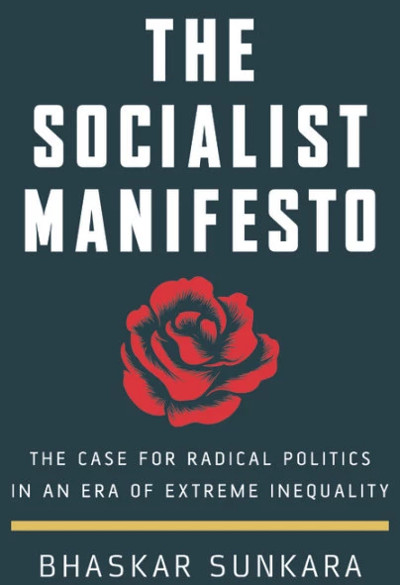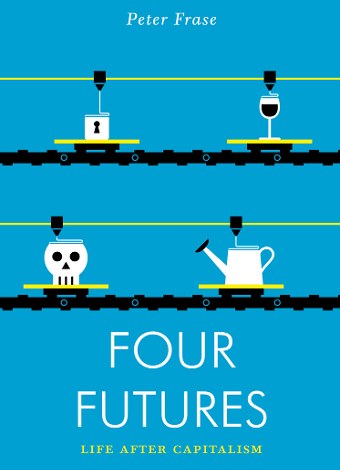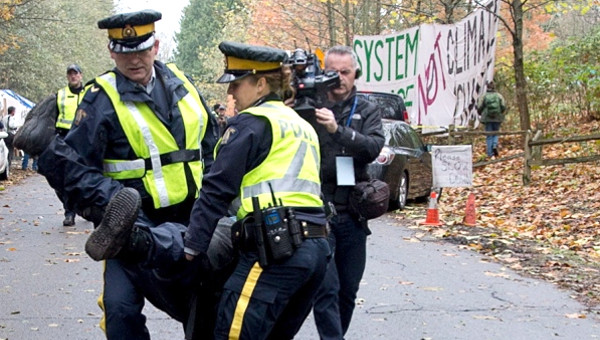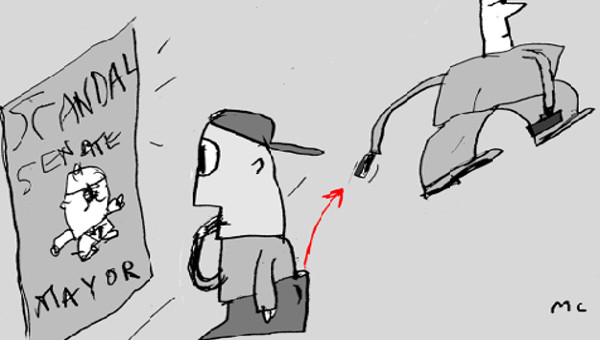Between Dystopia and Democratic Socialism
After the fall of the Berlin Wall, there was a widespread sense that liberal capitalism had triumphed in the battle of ideas, and that socialism as a plausible alternative was pretty much dead. But the many crises of contemporary capitalism – obscene levels of economic inequality, looming ecological disaster, the rise of the racist and anti-democratic populist right, the new threats of surveillance capitalism and the surveillance state – threaten dystopia, an unbearable future. In response, the idea of socialism has been re-discovered by a layer of activists struggling for radical change, especially young people.
 But what is socialism? If we are against capitalism, what are we for? Is the socialism we have in mind a more robust version of social democracy, despite its past accommodations to a capitalist economy, or a renewal of past visions of a post-capitalist economy and society, or of utopia? These questions are being debated in recent books and left journals, which will help shape contemporary progressive politics.
But what is socialism? If we are against capitalism, what are we for? Is the socialism we have in mind a more robust version of social democracy, despite its past accommodations to a capitalist economy, or a renewal of past visions of a post-capitalist economy and society, or of utopia? These questions are being debated in recent books and left journals, which will help shape contemporary progressive politics.
As underscored in a new book by Bhaskar Sunkara, the editor of the American magazine, Jacobin, democratic socialists believe that the ultimate goal of the left is to build a post-capitalist society and economy (The Socialist Manifesto, Basic Books, 2019). But, unlike Leninists, they recognize that building a socialist society will be a protracted process, as opposed to a single revolutionary rupture. It will involve building a mass movement, including a renewed labour movement and extra-parliamentary politics. However, such a transformation will require working through the institutions of the liberal democratic state, with a strong commitment to the rule of law, civil rights, and democratic and political rights such as freedom of speech and multi-party elections. This process can be thought of as extending democracy from the political to the social and economic sphere, including through the extension of social and economic rights and expansion of public and other collective forms of ownership, as well as creating more democratic work-places. Socialism is about creating a society in which all individuals are free to develop their full potential, as opposed to a single collective goal.

The Trajectories of Democratic Socialism
Unlike many social democrats, democratic socialists think that our long-term goal is more than a market-based capitalist economy, even one with a large public sector, strong unions, and a redistributive welfare state. In the social democratic heyday of the post-War period, enormous advances were indeed made toward what the sociologist Gosta Esping-Anderson termed the “decommodification of labour,” and the lives of working people were transformed in the process. Many services, notably health, education, culture and recreation, and housing came to be delivered outside of the market on the basis of citizen entitlement rather than ability to pay. Sustained near full employment plus unemployment insurance, public pensions, child benefits, and training programs gave working people a substantial degree of security in what remained a capitalist labour market. Unions played a major (albeit junior) co-government role in the workplace. Corporate economic power was subject to effective regulation in the public interest.
In the context of the steady growth of wages and social programs and genuine economic security, it is little wonder that many social democrats said that our historic goals had been essentially achieved well short of the original goal of socialization of the means of production. In Canada, echoing debates in Britain and Germany, the Winnipeg Declaration that preceded the formation of the New Democratic Party (NDP) in 1961 replaced the avowedly anti-capitalist Regina Manifesto of the CCF, explicitly limiting the goals of the left to a mixed economy and a full-employment welfare state. Public ownership and state economic planning, which was the common understanding of the left until the age of post-War mass affluence, came to be widely seen as an anachronistic means of making social progress.
Yet this perspective neglected the dependence of the social democratic compromise upon a unique set of circumstances – the experience of the Great Depression and Fascism that had discredited the right, as well as international economic arrangements after the War that allowed states to make their own choices free of the pressures of global capital mobility. And, as emphasized by Sunkara, strong economic growth and healthy profits underpinned the post-War class compromise, securing the cooperation of capital for an extended period. At least temporarily, social democrats did not feel they paid a price for leaving investment and the levers of economic power in the hands of private corporations. This changed when profitability came to be threatened by rising real wages and slumping growth in the 1970s.
The neoliberal era that began in the early 1980s saw corporations and the right attack the post-War social democratic settlement, putting the left on the defensive, at best. Many social democrats such as Tony Blair in the UK, Gerhard Schröder in Germany and liberal democrats such as Bill Clinton and Barack Obama in the United States became, in effect, slightly progressive neoliberals. They embraced global “free trade” and capital mobility as opposed to regulated national economies, celebrated the market, imposed austerity, and no longer had any interest in radical redistribution or fundamental institutional change beyond a shallow commitment to greater equality of opportunity and less poverty.
This bastard strand of social democracy has been hugely discredited by the inexorable rise of economic inequality to appalling levels, the concentration of enormous wealth and power in the hands of the uber-rich, the stagnation of wages and living standards for the vast majority of working people, increased economic insecurity, and the rise of precarious and low-paid work. To that dismal litany should be added the failure of existing governments of almost all stripes to deal at all seriously with catastrophic climate change and the wider ecological crisis. Saving the planet, it is safe to say, will involve far more comprehensive economic planning than is possible under corporate dominated capitalism. On top of the inequality and ecological crises, many fear the threat of automation and the end of work due to the rise of machine learning, artificial intelligence (AI), and robots. Technological change has been used to further entrench corporate monopolies, especially over so-called intellectual property, further increasing corporate power and threatening democracy through control of big data and technologies of mass surveillance.
The Threat of Dystopia
There is a rich tradition of dystopian fiction and film that has anticipated barely liveable futures as current trends in twenty-first century capitalism inexorably unfold. Think of Blade Runner, a world in which the robots have escaped human control, the planet has been badly damaged by climate change, and huge inequalities of wealth and power are the norm. The movie Elysium describes a world in which the rich have severed themselves off from an almost unlivable and brutal world, enjoying lives of material and psychic abundance, unlike the great mass of humanity. The reality of surveillance capitalism and the all-knowing state has rekindled the dark vision of George Orwell’s 1984 in which the individual is crushed by the omniscient and all-powerful state.
Shoshana Zuboff argues that we are already well beyond Orwellian dystopia due to big data, artificial intelligence, machine learning, and the explosion of computing capacity to analyze huge quantities of information (The Age of Surveillance Capitalism: The Fight for a Human Future at the New Frontier of Power, Public Affairs, 2019). “Big Other” is made up of a handful of monopolistic and unscrupulous corporate giants such as Google and Facebook that know as much and more about us, their users, than we do ourselves. They know our interests, our attitudes, our emotions, our movements, and our purchases. These technologies were first developed to target ads more effectively to consumers based on search behaviour and social media posts, but companies have gone well beyond informed prediction to actually mould and shape behaviour. In China, the surveillance state has used facial recognition and other technologies to monitor individuals in order to give them a “social credit” score, with high marks being needed to access travel privileges. Surveillance capitalism driven by profit-seeking giants is creating a “sanitized tyranny,” relatively unconstrained by the state, which uses this knowledge base for its own national security purposes as was revealed to the world by Edward Snowden.
“Big Other” increasingly monitors us at work, as in the electronic bracelets worn by Amazon warehouse workers, and is being used to gather information on our formerly private lives. Our phones with their cameras, microphones and GPS systems track us in real time and potentially listen in on us in our homes along with our smart televisions. Apps we download and whose terms of service we approve routinely without reading them are often deeply intrusive, giving third parties access to our data. Insurance contracts are being written that give us lower premiums in return for real time monitoring of our driving behaviour, setting the stage for possible monitoring of our health-related behaviour in return for health insurance.
Employers often contract out hiring decisions to third-party companies, which then draw on vast stores of personal data to vet candidates. And work is being transformed to make us more compatible with machine intelligence. Proposals for so-called Smart Cities seek to capture the totality of our lives, supposedly in return for greater convenience. The internet of things can go so far as to deprive us of control of functions in our home environment, just as self-driving cars threaten surveillance of where we are and control of our movements. Facebook algorithms have been used to target messages that do not just predict behaviour but also shape what we think and what we do, including the ability to send us “fake news” to influence our votes. Zuboff thinks we are well on our way to a “hive machine” in which individual and human choice shrink to the margins, and machine intelligence and logic prevail.
Plausible Utopias
By contrast, we lack plausible utopias in which humanity has responded successfully to the great challenges of our time. Past socialist utopias in fiction such as Edward Bellamy’s Looking Backward and William Morris’s News from Nowhere were best-sellers at the heyday of industrial capitalism in the late nineteenth century, presenting a highly desirable post-capitalist world of material abundance, equality, and social harmony. They certainly presented socialism, in the sense of common ownership of property and equal shares for all, as both desirable and possible, and consistent with human nature, which was held to be co-operative and capable of transcending a purely individualist ethos. In truth, both novels are poor, overly didactic works of literature, and shared many Victorian beliefs on gender and other issues which ring badly today. But at least they conveyed a vision that made socialism plausible and tangible. A few contemporary “social science fiction” writers such as Cory Doctorow (for example, in his recent novel Walkaway) have suggested that new technology and automation could be used to build a much better world, but there is a well-founded sense that, in the wake of the demise of Communism and the exhaustion of mainstream social democracy, we lack a vision of socialism as a viable utopia.
 Writing in 1916 amidst the horrors of the First World War, the famous German-Polish socialist Rosa Luxemburg argued that humanity faced a stark choice between socialism and barbarism. The latter, in the form of fascism, was only narrowly defeated, setting the stage for social democracy. Naomi Klein has similarly argued that the real choice we face today is between the status quo and radical change, given the scale of the ecological crisis and its deep relationship to capitalism, and given that growing economic inequality is deeply rooted in capitalist economic dynamics. Many commentators and activists have come to accept the socialist argument that deep equality is impossible if a small elite control economic, and thus political, power.
Writing in 1916 amidst the horrors of the First World War, the famous German-Polish socialist Rosa Luxemburg argued that humanity faced a stark choice between socialism and barbarism. The latter, in the form of fascism, was only narrowly defeated, setting the stage for social democracy. Naomi Klein has similarly argued that the real choice we face today is between the status quo and radical change, given the scale of the ecological crisis and its deep relationship to capitalism, and given that growing economic inequality is deeply rooted in capitalist economic dynamics. Many commentators and activists have come to accept the socialist argument that deep equality is impossible if a small elite control economic, and thus political, power.
An especially provocative and succinct recent book by Peter Frase (Four Futures: Life After Capitalism, Verso 2016) argues that in a world confronted by multiple crises caused by or associated with twenty-first century capitalism – inequality, the ecological crisis and corporate-driven automation and surveillance – we must choose between a socialist future and dystopia. More specifically, he argues that massive technological and organizational change, artificial intelligence, and the rise of the robots, as well as the new connecting information technologies, open up the possibility of socialism, doing away with bad jobs, and enabling much richer lives for all through a fair sharing of the fruits of possible abundance. But, he argues, new technologies under the sway of capitalism threaten to create ever more unequal, brutal, and ecologically unsustainable societies.
Frase, who is also associated with the American left journal Jacobin, describes four possible futures based on social science and speculative “social science fiction.” These are not predictions but informative outlines of possible social trajectories which will be determined by politics – how we collectively deal with inequality, automation, and the ecological crisis.
Four Possible Futures
The first dystopia, “rentierism” is the most plausible continuation of the path on which we are now embarked. The production problem is well on its way to being solved through rapidly advancing productivity as was envisaged by Marx and also by Keynes in his famous essay on economic possibilities for our grand-children. However, the capitalist elite extract and control huge and rising economic rents or surplus profits based upon control of markets that fuel compounding wealth and income inequality, as has long been argued by economist Joseph Stiglitz. (See his new book People, Power and Profits, Norton, 2019). As Keynes also argued, mature capitalism opens up the way to the dominance of “rentiers” who extract surplus profits while making no real productive contribution to society.
The key issue is who will own the robots and the intellectual property rights that generate these rents. Meanwhile, technological and organizational innovations progressively destroy many good jobs and create cut-throat competition for the jobs that cannot be automated out of existence. Needed labour shrinks to a small creative class, guard labour, needed to control dissent, and servants pandering to the needs of the rich. This creates a chronic tendency for wages to fall, and thus, for demand to stagnate.
“Exterminism” is an even worse dystopia, marked by extreme hierarchy and scarcity. As in Elysium, a small elite live in luxury in the ultimate gated community above the Earth, while the great mass live horrible lives on a poisoned planet. One is reminded of the large estates in New Zealand and Argentina that are apparently being purchased by Silicon Valley tech billionaires as possible bolt-holes. The central problematic of exterminism is that “abundance and freedom from work are possible for a minority, but material limits make it impossible to extend the same way of life to everyone. At the same time, automation has rendered masses of workers superfluous. The result is a society of surveillance, repression, and incarceration always threatening to tip over into one of outright genocide.”
 Frase’s two more utopian visions pre-suppose the political overthrow of the global elite, a project that could itself have dystopian consequences. “If the rich won’t relinquish their privileges voluntarily, they would have to be expropriated by force, and such struggles can have dire consequences for both sides.”
Frase’s two more utopian visions pre-suppose the political overthrow of the global elite, a project that could itself have dystopian consequences. “If the rich won’t relinquish their privileges voluntarily, they would have to be expropriated by force, and such struggles can have dire consequences for both sides.”
Under communism, based on abundance and lack of hierarchy, life would cease to be centred around wage labour, and the expansion of free time would allow for individual self-realization, which Marx thought of as the realm of freedom, while Keynes spoke of the possibility for all to lead full and meaningful lives. Non-alienated labour would still exist to manage the machines and engage in activities like “deep caring,” but there would be a radical decommodification of labour through a universal basic income that would force the desirable automation of routinized jobs and provide all with a decent and substantively equal standard of living. This is not, however, the end of history if only because class relations are not the only source of hierarchy and political debate and conflict.
Socialism based on continued scarcity with equality plus ecological sensitivity seems a more plausible trajectory for the foreseeable future. Frase argues that we can have an egalitarian solution to the ecological crisis, but this will require planning, a much more limited role for markets, and radical re-distribution to end large concentrations of wealth and income. Again, he envisages a non-residual basic income, combined with a major expansion of collective consumption through public services. “If we can tackle the inequalities that make our current market societies so brutal, we might have a chance of deploying market mechanisms to organize consumption in an ecologically limited world, allowing all of us to come through capitalism and climate change as equals.” Socialism is not utopia, but it can still be a world of freedom.
Plausible Socialism
Frase’s interest in a plausible socialism is but one example of a significant revival of interest in sketching out just what a post-capitalist society would look like starting from where we sit today. As widely noted, classical Marxism offers surprisingly little. Marx had no developed alternative model in mind. Indeed, he poured scorn on utopian socialist blueprints and “recipes for the kitchens of the future.” Writing early in the expansion of industrial capitalism, he expected socialism to arise in a distant future when capitalism had exhausted its incredible productive potential and capitalist class relations had become a fetter on the advance of humanity to a better world. He did not even theorize much about politics, though he anticipated that the struggles for socialism and political democracy would be closely intertwined and that the latter would set the ground for the former in countries such as Britain.
In the twentieth century, socialism in the sense of a post-capitalist economy came to largely mean political democracy plus national economic planning through nationalization of at least the commanding heights of the economy, as in the CCF program and the platform on which the Labour government of Britain was elected in 1945. Nationalization was partly intended to end concentrated wealth, and also to set the basis for planning the economy to meet human needs.
Alternatively, socialism came to be conflated with Stalinist central economic planning, which was not only brutal, inhumane, and profoundly anti-democratic, but also failed to deliver the goods and emerged as a serious rival to liberal democratic capitalism in terms of growth (though we should note that Communism played the major role in defeating fascism, and that it achieved some economic successes in the Khrushchev era as the Gulag was dismantled). There are many cautionary lessons to be drawn from the Soviet experience, not least that democracy is incompatible with highly centralized state planning and a fully socialized economy that concentrates power in the hands of a small elite.
Given that radical change must necessarily come through the democratic political process anchored in specific countries, it is hard to envisage a socialism that does not involve a significant expansion of the economic role of existing states, including socialization of the “commanding heights” of finance and concentrated corporate power. To be sure, the reassertion of democratic control over capital will have to take place at both the international and the national level, especially in countries like Canada, which are deeply implicated in global markets and are very far from the relative self-sufficiency that enables purely national economic planning. But the traditional emphasis of the left upon expanding the economic role of the state remains highly relevant.
Mention should also be made of visions and even blueprints of a “bottom up” socialism based upon workers’ councils. There was a minority tradition in the British Labour Party in support of greater worker control of the nationalized industries, but in the event, only ownership changed while the managers remained in place. The dominant tendency on the left has been to think of a division of labour between strong unions and/or workers’ councils at the workplace playing a subordinate role compared to a social democratic or socialist party working through the state to build a socialized economy. Some socialist intellectuals have outlined various models of participatory and democratic socialist planning and models of a pluralistic market-based socialism on a national level. In the 1970s, Tony Benn in the UK and Rudolf Meidner in Sweden belonged to a current that saw moving to collective ownership and democratic socialist planning as an alternative to the stagflation crisis. Meidner proposed that ownership and the investment process be ultimately socialized by gradually transferring ownership from private capital to pools of socially-owned pension funds, while Benn advocated some combination of worker control at the workplace and an expansion of public ownership to take over “the commanding heights.”
As Erik Olin Wright has noted, some socialists in recent times have advocated much greater civil-society and democratic control of the post-capitalist economy as opposed to, or in combination with, centralized state control.
In this broad tradition of thought, there has been interest in expanding non-state but also non-capitalist forms of ownership such as worker and consumer co-operatives, not-for-profit enterprises and credit unions, social enterprises, pools of pension funds, and community and municipally-based corporations. Also, there have been advocates of civil-society regulation as opposed to state regulation of large corporations by expanding the role of workers and other “stakeholders” through reforms to corporate governance. Wright talks of “voyages of exploration” in which these kinds of examples and experiments expand the economic role of civil society in the interstices of a capitalist economy. Encouragingly, there has recently been a significant revival of interest in thinking about new institutions and practices to move beyond capitalism and old-style centralized state socialism. Most notably, the Labour Party in the United Kingdom has debated new forms of social ownership – favouring the expansion of co-operatives and not just public enterprises, and calling for much greater worker control at the workplace through the expansion of works councils and a gradual transfer of minority equity stakes in large enterprises to workers. (See Economics for the Many, edited by John McDonnell, Shadow Chancellor of the Exchequer under Jeremy Corbyn.)
A recent book by Leigh Phillips and Michal Rozworski makes the convincing and important argument that the technological and organizational sophistication of contemporary capitalism has laid the ground for much less reliance on the so-called free market to organize production (People’s Republic of Walmart – How the World’s Biggest Corporations are Laying the Foundation for Socialism, Verso, 2019). The key imperative is to move from production for profit to production to meet human needs based on common ownership and much more equal incomes. The conventional wisdom has been that markets are needed to match demand and supply efficiently and that state planners simply could not process the vast amounts of information needed to reach optimal prices. But, as the economist Ronald Coase noted long ago in the 1930s, large firms often choose to produce goods and services in-house rather than buy on the market and exist as islands of planning to minimize transaction costs. Further, capitalist economies have been planned in times of war, and innovation has long involved large scale public investment and planning.
Phillips and Rozworski bring this story up to date, showing that our economy is planned on a massive scale but by monopolistic corporations in search of profits. For example, Walmart uses big data, advanced logistics, and long-term relationships with suppliers to ensure that stocks on the shelf are continuously replenished. Manufacturing suppliers respond to sales almost minute by minute. Amazon uses advanced logistics and robots in warehouses to achieve super fast delivery times. These firms have gained dominance not just through cut-throat pricing and brutalized working conditions, which are definitely part of the story, but also through massive investments in information technology. They actually shape demand in real time through closely targeted messages to consumers. The authors conclude that “(p)lanning is already everywhere, but rather than functioning as a building block of a rational economy based on need, it is woven into an irrational system of market forces driven by profit. Planning works. Just not yet for us.”
Sam Gindin (“Socialism for Realists,” Catalyst, Volume 2, Issue 3, Fall 2018) has provided an important sketch of what democratic economic planning might look like. To my mind, he correctly suggests that we need planning plus markets. The state must necessarily play a major role in a planned economy, perhaps including through socialization of finance and through large state-owned enterprises. But there is a role for community-based small enterprises to provide variety to consumers and to produce high quality goods and services in local communities/economies. And there will and should be a labour market in the sense that individuals choose where to work in response to incentives, even while we decommodify labour through comprehensive public services and income supports that substantially reduce reliance on wages. The scale of necessary wage differentials will have to be determined.
He argues that nationalization is not enough. Even if we own the means of production, perhaps including the information technology giants, social choices will have to be made about what to produce. We do not live in a post-scarcity world and will have to choose, for example, between increasing consumption on the one hand and expanding public services and/or reducing working-time on the other. Of necessity, these choices will be political. We must also choose how to produce, to the degree that there is some trade-off between productivity and new technologies, and healthy working conditions. We will also have to balance consumption with ecological imperatives.
Gindin argues that socialism must combine social ownership with popular/workers’ control. A more democratic economy will demand the development of new capacities and the ability to make real choices at the level of the community and the workplace and not just at the level of the state. But this involves many important tensions. Worker co-ops or other collectives must somehow fit into a broader economic plan, but they will have a tendency to promote their own specific interests. Too much decentralization of economic decision-making to even post-capitalist enterprises can generate new inequalities if we are not careful. At the same time, we have to think about democratizing political processes that are now centralized, for example, by bringing together producers and users of public services like healthcare. Could democratic social media allow for greater deliberation and decentralization of political decision-making?
The fact that the left is beginning to think about a plausible socialism is indeed welcome in a context where the status quo is leading us to dystopia. But we need much more debate and discussion about the new world we want to build. That is what utopias are for. •





